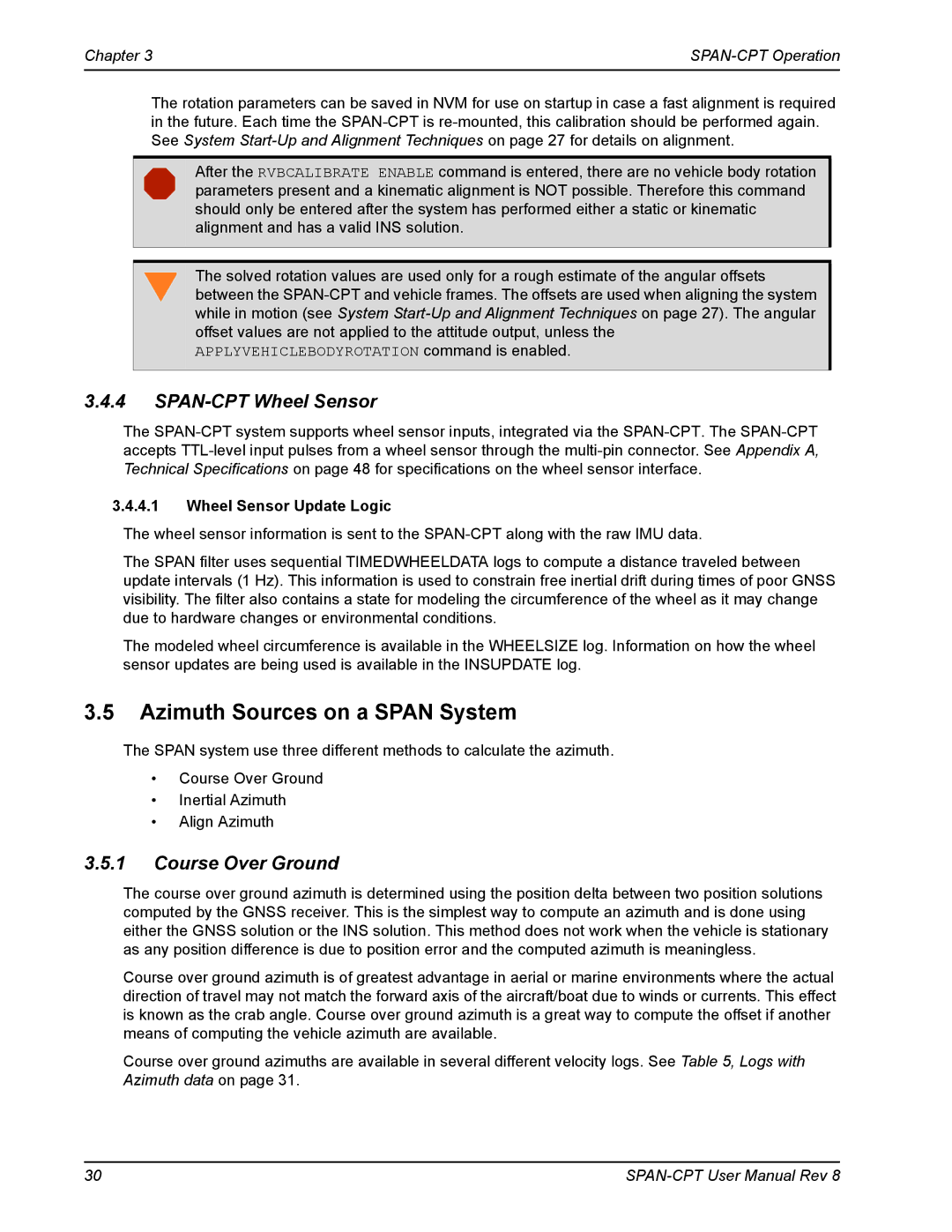
Chapter 3 | |
|
|
The rotation parameters can be saved in NVM for use on startup in case a fast alignment is required in the future. Each time the
parameters present and a kinematic alignment is NOT possible. Therefore this command should only be entered after the system has performed either a static or kinematic alignment and has a valid INS solution.After the RVBCALIBRATE ENABLE command is entered, there are no vehicle body rotation
between the
APPLYVEHICLEBODYROTATION command is enabled.
3.4.4
The
3.4.4.1Wheel Sensor Update Logic
The wheel sensor information is sent to the
The SPAN filter uses sequential TIMEDWHEELDATA logs to compute a distance traveled between update intervals (1 Hz). This information is used to constrain free inertial drift during times of poor GNSS visibility. The filter also contains a state for modeling the circumference of the wheel as it may change due to hardware changes or environmental conditions.
The modeled wheel circumference is available in the WHEELSIZE log. Information on how the wheel sensor updates are being used is available in the INSUPDATE log.
3.5Azimuth Sources on a SPAN System
The SPAN system use three different methods to calculate the azimuth.
•Course Over Ground
•Inertial Azimuth
•Align Azimuth
3.5.1Course Over Ground
The course over ground azimuth is determined using the position delta between two position solutions computed by the GNSS receiver. This is the simplest way to compute an azimuth and is done using either the GNSS solution or the INS solution. This method does not work when the vehicle is stationary as any position difference is due to position error and the computed azimuth is meaningless.
Course over ground azimuth is of greatest advantage in aerial or marine environments where the actual direction of travel may not match the forward axis of the aircraft/boat due to winds or currents. This effect is known as the crab angle. Course over ground azimuth is a great way to compute the offset if another means of computing the vehicle azimuth are available.
Course over ground azimuths are available in several different velocity logs. See Table 5, Logs with Azimuth data on page 31.
30 |
